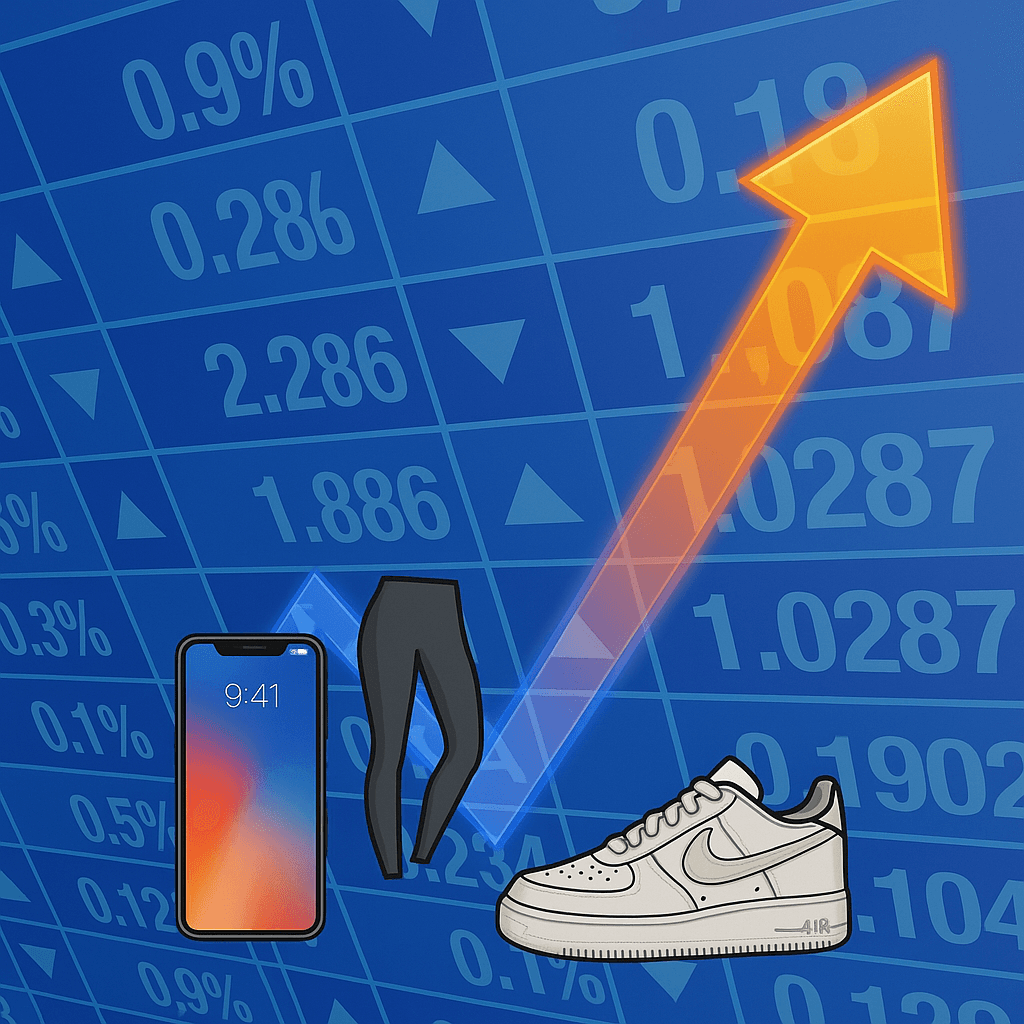Tariff Alert: How U.S. Trade Tariffs Impact Your Wallet in 2025
January 26, 2025

Tariff Alert covers U.S. trade tariffs from 2019 to now, including List 4a, China’s retaliations, and recent decisions. Learn how tariffs impact consumer prices and discover strategies to manage rising costs. Stay informed and plan ahead.
Tariffs might sound like a bunch of confusing numbers and legislative jargon, but they impact everyday American life—in ways that could literally change the price tag on your favorite pair of sneakers or that must-have smartphone accessory. Tariff Alert cuts through the complexities —and most of the boring details —so that you, the savvy U.S. consumer, can easily understand tariff-related news. We simplify complex trade policies with bite‑sized explanations and relatable examples. We'll try to add some humor and sarcasm to keep things lively, with AI-generated visuals that sometimes won't make sense, but that's the price we pay for timely content, right? Most importantly (to you and to us), we show you products at possible risk of price increases, so that you can make informed purchasing decisions.
A Brief History Setting Things Up for Today
Tariffs aren’t new to the United States—they’ve been part of our economic toolkit for centuries. In the early days, tariffs helped finance the government and protect fledgling domestic industries. Over time, they evolved to become a key feature in the modern political and economic debate.

List 4a: A Closer Look
Back in August 2019, the Trump administration targeted a set of Chinese imports known as "List 4a." Initially slated for a 10% rate, it was increased to 15% as part of an effort to protect American manufacturing and push China toward renegotiating trade terms.
- Products Included:
List 4a broadly covered consumer goods—from electronics and apparel to household items and industrial components. - The Intention vs. Reality:
The plan was to generate billions in tariff revenues and to serve as leverage in trade negotiations. While forecasts suggested a significant revenue boost (with estimates around $11 billion for a particular tranche), real-world outcomes were more mixed. Many companies shifted their sourcing strategies or absorbed some of the added costs, so the revenue hit wasn’t as dramatic as originally anticipated.
China’s Retaliatory Moves
The List 4a decision and other tariff hikes sparked a strong reaction from China. Instead of sitting back, China launched a series of retaliatory measures:
- Export Tariffs:
China quickly imposed tariffs on a range of U.S. exports such as agricultural products (like soybeans and pork), technology components, and industrial goods. - Broader Retaliation:
These moves weren’t limited to one sector. The chain reaction led to higher costs for U.S. companies that source raw materials from China, disrupted established supply chains, and created uncertainty in global markets. - Market Effects:
The retaliatory actions contributed to fluctuations in global prices and shook investor confidence, underscoring the interconnected nature of modern trade.
At the Beginning of Biden's Term...
When Biden took office, a comprehensive review under Section 301 was completed. For those unfamiliar, Section 301 of the Trade Act of 1974 empowers the U.S. Trade Representative to investigate and respond to unfair trade practices concerning technology transfer, intellectual property, and innovation.
- What the Review Did:
The review gathered public comments, delved into data on China’s trade practices, and ultimately reinforced many of the tariffs set during the previous administration. At the same time, it adjusted rates on key products such as semiconductors, electric vehicle components, and medical supplies to balance industry protection with consumer impact. - The Bigger Picture:
The goal was to maintain a level playing field—continuing to pressure unfair practices while ensuring that American consumers still had access to affordable products.
Which Brings Us to Today...
Trump’s return to the White House signaled that tariffs would once again play center stage. Fast-forward to now:
- A Dynamic Landscape:
Recent months have seen tariff policies shift rapidly, with effective rates on U.S. imports reaching around 22% (after exemptions) and even peaking at 27% at certain points. Economists note that after consumers and businesses adjust through what’s called “post-substitution,” the effective rate is expected to average about 18.5%—the highest since 1933. - Looking Ahead:
The ride for the coming months and years is shaping up to be wild. With ongoing tariff adjustments, potential retaliatory moves, and evolving global trade dynamics, staying informed is more important than ever. And that’s exactly why Tariff Alert exists—we want to keep you updated as these policies continue to evolve.
Why You Should Care
Prices fluctuate due to many variables, and changes in tariff policies are one significant factor affecting the cost of your favorite products.
- Impact on Everyday Life:
Tariff changes can sometimes mean higher prices—but in other cases, businesses might shift suppliers or adjust production processes to keep costs down. The bottom line is that these policies influence both the availability and price of imported and domestic goods. - Making Sense of the Noise:
By understanding tariff trends, you can better anticipate market changes and shop more wisely. Whether you’re budgeting for your monthly groceries or planning to buy that new gadget, staying current on these developments can help you adapt in a changing market.
At Tariff Alert, Our Goal Is To:
- Keep You Updated: Deliver clear, neutral, and timely news on the latest tariff changes.
- Cut Through the Spin: Provide straightforward analysis that demystifies trade policies without the partisan hype.
- Help You Navigate: Offer insights that empower you to understand how these policies might impact your everyday shopping choices.
Thanks for reading this quick recap from Tariff Alert. Please check back often for more updates on how global trade policies affect you. Don't forget to share this article with friends, family, and colleagues.
-TA Staff